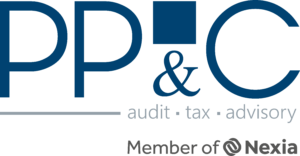Observing the world trend, the Brazilian government incorporated into the tax law specific rules to regulate the prices negotiated in international transactions between companies of the same corporate group[1]. To this end, the Brazilian Congress approved law 9.430/96 which contains specific provisions namely for dealing with Transfer Price. This law completed Brazil’s transition to the tax system on a universal basis.
It is important to remember that Brazil is not a member of OECD and, unlike the existing rules in most other countries with this type of legislation, Brazilian rules for Transfer Price differ significantly from the international guidelines, especially those established by the OECD.
Despite being inspired by the OECD model, Brazil does not follow principle of arm’s length, since the main method consists in the use of objective calculation formulas, with fixed, preestablished profit margins and, mainly, wavering any need for economic analysis of risk, functions or (tangible or intangible) assets used.
In general, in the case of imports subject to Transfer Price, the main Brazilian method is to verify that, in the fiscal year, the imported[2] products used for resale or as inputs were sold by applying a minimum fixed profit margin (only the difference between the cost price and net revenue) of 20%, 30% or 40%, according to the industries’ economic activity, as shown:
I – 40% (forty percent) for the sectors of:
- pharmachemicals or pharmaceutical products;
- tobacco products;
- optical, photographic and cinematographic instruments and equipment;
- machinery, appliances and equipment for dental-medical and hospital use;
- extraction of petroleum and natural gas; and
- petroleum by-products;
II – 30% (thirty percent) for the sectors of:
- chemical products;
- glasses and glass byproducts;
- pulp, paper and paper products; and
- metallurgy; and
III – 20% (twenty percent) for the other sectors.
In view of the foregoing, the application of fixed margins in Brazil is severely criticized by OECD member countries, which use the arm’s length principle, since this method corresponds to an assumption or fiction and may result in double taxation or double non-taxation.
Another criticism is that, once the minimum profit margin is established and known, companies can price their products within the limits established by law and allocate profit in the country where it is most favorable. On the Brazilian side, the authorities strongly defend these methods as they believe that they have greater objectivity and transparency, as well as that they push away the subjectivities of the arm’s length principle and avoid profit shifting.
Thus, in the understanding by the Brazilian authorities, the BEPS Project (action 8-10) evidences all vulnerabilities of the arm’s length and proposes, on the other hand, that the world should seriously consider applying the fixed margins.
Another aspect that is very relevant in the Brazilian legal system, which diverges sharply from global practices and is widely discussed in the context of the BEPS Project (Action 01, 08-10), corresponds to the treatment related to intangibles. This divergence occurs simply because Brazil does not apply Transfer Price rules to payments of royalties abroad.
This posture does not mean that the country is subject to aggressive tax planning involving intangibles, on the contrary, Brazil uses general rules of limit of deductibility for the payment of royalties.
Although controversial and subject to disputes, the former legislation[3], which is still in force, establishes the limits of deductibility of expenses for the purpose of Income Tax, according to the corporate group and types of royalties. In this case, for example, expenses with royalties for the use of industry and trade brands, or commercial names, in any type of production or activity, have their deductibility limited to 1% of the income arising from the use of the brand.
The Brazilian tax administration further understands that its rules do not diverge from OECD principles and maintains its application, including in transactions with countries which signed double taxation avoidance agreements[4].
Another peculiarity of Brazil subject to criticism, is its position in not responding, for several years, the requirements of friendly negotiations of several countries with which the country has an agreement and that does not comply with the Brazilian TP methods.
In response to this global criticism, and in line with the pressure of the BEPS Project (Action 14), Brazil has finally issued a legal standard[5] containing all procedures necessary for the Mutual Agreement Procedure (MAP), including instructions for divergences related to Transfer Price methods.
The Brazilian MAP standard is extremely clear and details all the procedures that need to be observed in order for countries to find solutions to divergences in the use of tax rules, however, Brazil does not accept to participate in tax arbitration in any way, nor does legislation set a deadline for the resolution of the conflict, which puts the whole process at risk.
It should also be noted that recently membership of the OECD has been formally requested and, as a consequence, it is likely that the pressure increases towards Brazil’s compliance with arm’s length and OECD standards related to the Transfer Price, in addition to of several other topics of international tax policy, should Brazil effectively wish to be accepted in this select group.
Thus, it is not possible to conclude whether Brazil will accept any demand for changes in its rules
PP&C – AUDITORES INDEPENDENTES S/S.
Marcus Vinicius Montanari
Tax Partner
[1]. Brazilian legislation requires the calculation of Transfer Price, including for operations with companies domiciled in tax havens. Tax heaven is where tax income is not levied, or tax is levied at a maximum rate below than 17% (seventeen percent);
[2]. PRL Method (Resale Price Less Profit) – Brazilian law requires that calculation is made by product, considering the weighted average of purchase and sales prices. The calculation provides for several adjustments established in Normative Instruction n. 1312. It should be noted that Brazilian legislation uses several other methods: PIC, CPL, PVEX, CAP, PVV and PVA that will not be analyzed in this article.
[3]. Article 436/58, dated 12-30-58, as amended by Ordinances Nº 113/59 and GB-314/70. Available at: http://www.inpi.gov.br/menu-servicos/transferencia/arquivos/legislacao-transferencia-de-tecnologia/portaria436.pdf.
[4]. The Federal Revenue Service of Brazil has manifested itself to this effect through Consultation Process Nº 12/00, as follows:
“SUBJECT: Corporate Income Tax – IRPJ
Menu: Adjustments established by law nº 9,430, of December 27, 1996, regarding Transfer Price. There is no prevalence of international treaties on domestic legislation. There is no contradiction between article 9 of the articles of the model convention with respect to taxes on income and on capital – which deals with transfer price in the conventions – and Articles 18 to 24 of law 9.430/96, which includes Transfer Price in Brazilian tax legislation”.
[5]. See Normative Instruction n. 1.846/2018.
Disponível em: http://normas.receita.fazenda.gov.br/sijut2consulta/link.action?visao=anotado&idAto=78559

